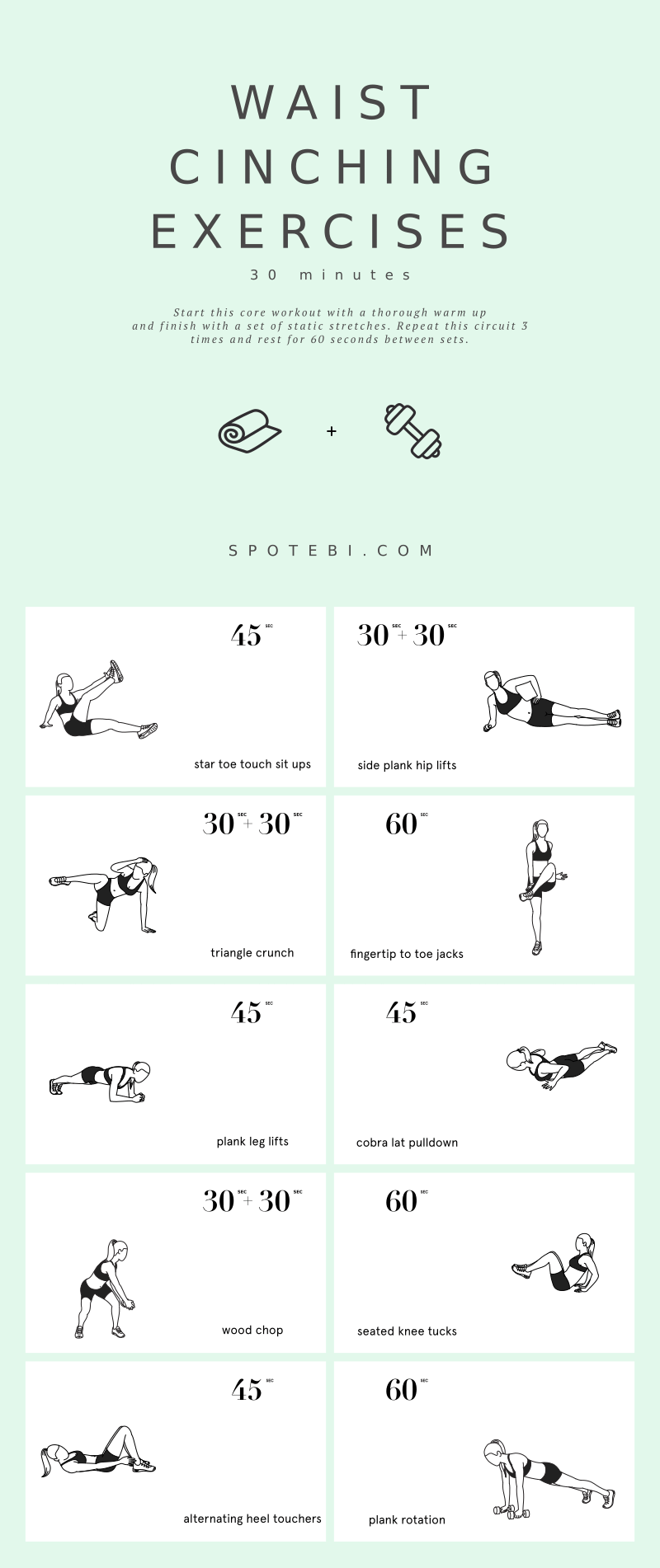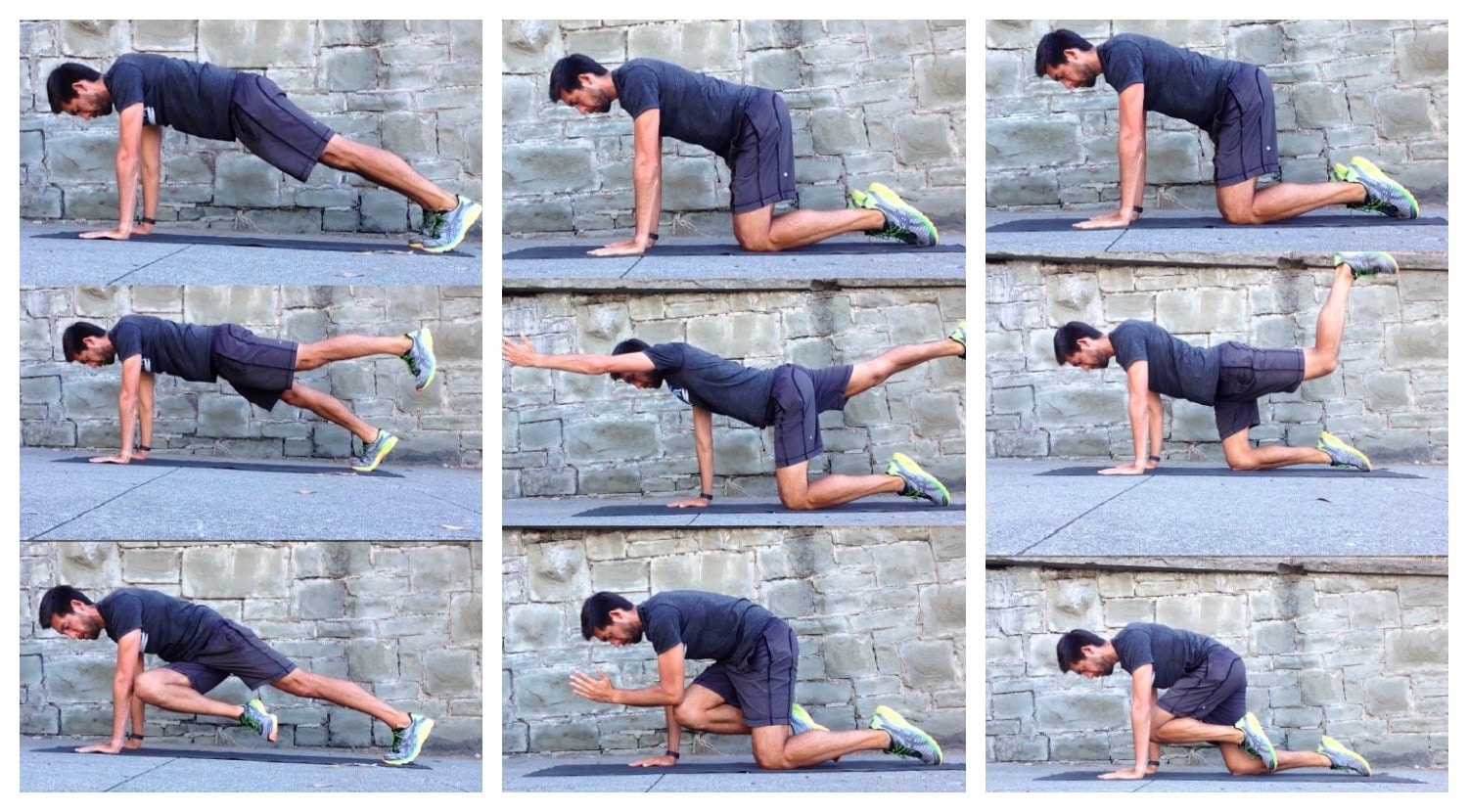Contents
- I. Introduction to Core Strengthening Exercises
- II. Benefits of Core Strengthening Exercises
- III. Understanding the Core Muscles
- IV. Common Core Strengthening Exercises
- V. Advanced Core Strengthening Exercises
- VI. Important Tips for Effective Core Strengthening
- 1. Start Slowly and Progress Gradually
- 2. Focus on Form and Technique
- 3. Incorporate Variety into Your Routine
- 4. Don’t Forget About Breathing
- 5. Engage Your Pelvic Floor Muscles
- 6. Maintain Consistency with Regular Workouts
- 7. Listen to Your Body
- 8. Combine Core Exercises with Cardio and Strength Training
- VII. How Often Should You Do Core Strengthening Exercises?
- VIII. Frequently Asked Questions about Core Strengthening Exercises
- 1. What are core strengthening exercises?
- 2. Why is core strength important?
- 3. Can I do core strengthening exercises if I have a weak back or abdominal muscles?
- 4. How often should I perform core strengthening exercises?
- 5. Are there any specific equipment or tools required for core strengthening workouts?
I. Introduction to Core Strengthening Exercises

Welcome to the world of core strengthening exercises! Whether you are an athlete looking to improve your performance or simply someone hoping to strengthen your core muscles for better posture and stability, these exercises can benefit everyone. In this article, we will dive into the basics of core strengthening exercises and explore their importance in achieving overall fitness.
Why is Core Strength Important?
Before we delve into specific exercises, let’s understand why having a strong core is crucial. The core muscles, including the abdominals, back muscles, hips, and glutes, provide a stable base for all movement. They help maintain proper alignment of the spine and pelvis while supporting the body during various activities.
The Benefits of Core Strengthening Exercises
Engaging in regular core strengthening exercises offers numerous benefits beyond just a toned midsection. Improved balance and stability are among the top advantages as these exercises target deep muscle groups that aid in maintaining equilibrium during dynamic movements.
Furthermore, a strong core can reduce the risk of injuries by providing better support for other muscle groups during physical activities such as running or lifting weights. Additionally, these exercises can enhance athletic performance by increasing power output and improving agility.
Types of Core Strengthening Exercises
There are various types of core strengthening exercises that target different areas within your midsection. Some popular examples include:
- Plank: This exercise targets multiple muscle groups simultaneously by holding a plank position with proper form.
- Russian Twist: By twisting side-to-side while sitting on the floor with knees bent or feet elevated off the ground, you engage your oblique muscles effectively.
- Superman: Lying on your stomach and extending your arms and legs off the ground engages the back muscles, promoting spinal strength.
- Bicycle Crunch: This exercise involves alternating knee-to-elbow movements while lying on your back, targeting both the abs and oblique muscles.
Tips for a Successful Core Strengthening Routine
To make the most of your core strengthening exercises, keep these tips in mind:
- Maintain proper form throughout each exercise to prevent strain or injury.
- Breathe deeply during each movement to increase oxygen flow to your muscles.
- Start with beginner-level exercises if you are new to core training and gradually progress as you build strength.
- Incorporate variety into your routine by trying different exercises or modifying existing ones. This will challenge various muscle groups within the core.
II. Benefits of Core Strengthening Exercises

Core strengthening exercises offer numerous benefits for individuals of all fitness levels. By incorporating these exercises into your routine, you can experience improved overall health and enhanced physical performance. Let’s explore some of the key benefits:
1. Improved Posture
A strong core helps maintain proper alignment and stability in the spine, leading to better posture. By engaging the muscles around your abdomen, back, and pelvis, core strengthening exercises promote a more upright position.
2. Enhanced Stability and Balance
A stable core is vital for maintaining balance during various activities or sports. Regularly performing core exercises strengthens the muscles responsible for stability, reducing the risk of falls or injuries.
3. Reduced Lower Back Pain
Weakened core muscles are often associated with lower back pain due to poor support for the spine. Strengthening your core can alleviate discomfort by providing greater support and relieving stress on your lower back.
4. Increased Athletic Performance
A strong core is essential for athletes across different disciplines as it improves power transfer between upper and lower body movements. Whether you’re a runner, weightlifter, or golfer, a solid foundation in your core enhances performance in specific sports.
5. Better Functional Fitness
The benefits of a strong core extend beyond athletic pursuits; they also enhance everyday tasks such as lifting heavy objects or bending down to tie shoelaces without straining your back.
6. Enhanced Breathing Efficiency
Your diaphragm plays an important role in breathing efficiently; hence having a stronger core helps optimize this process by allowing better control over breathing patterns.
Incorporating core strengthening exercises into your fitness routine can significantly improve your overall well-being. Whether you’re an athlete striving for peak performance or someone looking to enhance everyday activities, focusing on core strength is a key component of any exercise program.
III. Understanding the Core Muscles

In order to effectively strengthen your core, it is important to understand the muscles that make up this vital group. The core muscles are more than just your abdominal muscles; they include a complex network of interconnected muscles that work together to provide stability and support for your spine and pelvis.
The Rectus Abdominis
The rectus abdominis, commonly known as the “abs,” is perhaps the most well-known muscle in the core. It runs vertically down the front of your abdomen and is responsible for flexing your trunk.
The Transverse Abdominis
Deeper within your abdomen lies the transverse abdominis. This muscle acts like a corset, providing stability and compressing the abdominal contents. It plays a crucial role in maintaining good posture and preventing lower back pain.
The Obliques
The obliques are located on either side of your waist, running diagonally from your ribs to your hips. There are two sets: external obliques on top and internal obliques underneath. These muscles allow for rotation, twisting motions, and lateral flexion of the trunk.
The Multifidus
While not as prominent as other core muscles, the multifidus plays an essential role in stabilizing individual vertebrae of the spine. This deep muscle extends along each side of the vertebrae from neck to pelvis.
The Erector Spinae
Situated along either side of our spine, these long back extensor muscles help maintain an upright posture by extending (straightening) or laterally flexing our spine.
By understanding these key components of our core musculature, we can better appreciate the importance of strengthening and maintaining them. With targeted exercises, you can develop a strong core that not only improves your athletic performance but also supports everyday movements and helps prevent injury. Remember, a solid foundation starts from within!
IV. Common Core Strengthening Exercises

When it comes to strengthening your core, there are a variety of exercises that can help you achieve your fitness goals. These exercises target the muscles in your abdomen, lower back, and pelvis, which play a crucial role in maintaining stability and balance.
1. Plank
The plank is a classic exercise that engages multiple muscles in your core simultaneously. Start by getting into a push-up position with your forearms resting on the ground. Keep your body in a straight line from head to toe and hold this position for as long as you can while maintaining proper form.
2. Russian Twists
This exercise targets the obliques, which are located on the sides of your abdomen. Sit on the floor with bent knees and lean back slightly while keeping your back straight. Hold a weight or medicine ball with both hands and twist from side to side, touching the weight to the ground on each side.
3. Bicycle Crunches
Bicycle crunches are an effective exercise for targeting both upper and lower abdominal muscles as well as obliques. Lie flat on the floor with your hands behind your head and bring one knee towards your chest while simultaneously twisting so that opposite elbow meets knee. Alternate sides in a cycling motion.
4. Superman Pose
This exercise focuses on strengthening the lower back muscles along with glutes and hamstrings for overall core stability. Lie face down on a mat with arms extended overhead and legs straight out behind you. Lift both arms and legs off the ground simultaneously, creating an arch shape like Superman flying through the air.
5.Leg Raises
To perform leg raises effectively, lie flat on your back with your hands by your sides. Lift both legs off the ground together, keeping them straight, until they are perpendicular to the floor. Slowly lower them back down without touching the ground and repeat for desired repetitions.
These core strengthening exercises are just a few examples of how you can work towards building a strong and stable core. Remember to always listen to your body and start at a level that is comfortable for you, gradually increasing intensity as you progress. By incorporating these exercises into your routine regularly, you’ll be well on your way to achieving a stronger core and improved overall fitness.
V. Advanced Core Strengthening Exercises
Once you have mastered the basics of core strengthening exercises, it’s time to take your workout to the next level. These advanced exercises will challenge your core muscles even more, helping you build strength and stability. Remember to warm up before attempting these exercises and consult with a fitness professional if you have any concerns or injuries.
1. Plank with Leg Lift
This exercise is a variation of the traditional plank that targets your core muscles as well as your glutes and hamstrings. Start in a plank position with your elbows on the ground, then lift one leg off the ground while maintaining a straight body alignment. Hold for a few seconds before switching legs.
2. Russian Twists
Russian twists are an effective exercise that works not only your abdominal muscles but also your obliques. Sit on the floor with your knees bent and feet lifted off the ground. Lean back slightly and twist your torso from side to side, touching the floor next to each hip.
3. Side Plank with Hip Dip
The side plank with hip dip targets both your obliques and deep stabilizing muscles in the hips. Start by lying on one side, propped up on one forearm, with legs extended straight out or stacked together for added difficulty. Lower your hips towards the ground without touching it, then raise them back up.
4. Bicycle Crunches
Bicycle crunches are an excellent exercise for targeting all areas of your abdominal muscles while also engaging other muscle groups such as hip flexors and obliques. Lie flat on your back with hands behind head, lift shoulders off floor while bringing opposite elbow towards opposite knee in a cycling motion.
5. Plank Jacks
Plank jacks are a dynamic exercise that not only challenge your core muscles but also increase your heart rate. Start in a plank position, then jump both feet out wide like you would in a jumping jack motion. Jump them back together while maintaining proper form.
Remember to incorporate these advanced core strengthening exercises into your routine gradually and listen to your body’s limits. Consistency and proper form are key to achieving the best results and avoiding injuries. Keep challenging yourself, and you’ll continue to improve your core strength and overall fitness level!
VI. Important Tips for Effective Core Strengthening
When it comes to core strengthening exercises, there are a few important tips that can help you maximize your results and minimize the risk of injury. Follow these guidelines to ensure an effective and safe workout:
1. Start Slowly and Progress Gradually
Don’t rush into intense core exercises if you’re just starting out or have a weak core. Begin with basic exercises like planks, bridges, or bird dogs, and gradually increase the intensity as your strength improves.
2. Focus on Form and Technique
The key to getting the most out of your core workout is maintaining proper form throughout each exercise. Engage your core muscles by pulling your belly button in towards your spine, keep your back straight, and avoid straining other body parts.
3. Incorporate Variety into Your Routine
To effectively strengthen all areas of your core, include a variety of exercises that target different muscle groups. Mix up traditional moves like crunches with more challenging ones such as Russian twists or bicycle crunches.
4. Don’t Forget About Breathing
Breathing correctly during core exercises is crucial for optimal performance and preventing unnecessary strain on other muscles. Exhale deeply during the exertion phase (when contracting the muscles) and inhale during the relaxation phase.
5. Engage Your Pelvic Floor Muscles
Incorporate pelvic floor muscle contractions (Kegels) into some of your core workouts to enhance stability in the lower abdomen region while also improving bladder control.
6. Maintain Consistency with Regular Workouts
To see significant improvements in core strength, it’s important to be consistent with your workouts. Aim for at least three sessions per week, and gradually increase the duration and intensity as you progress.
7. Listen to Your Body
Pay attention to any discomfort or pain during core exercises. If something doesn’t feel right, modify the exercise or consult a fitness professional to ensure you’re performing it correctly.
8. Combine Core Exercises with Cardio and Strength Training
For overall fitness and a well-rounded workout routine, incorporate core exercises into a program that includes cardiovascular exercises like running or cycling, as well as strength training for other muscle groups.
By following these important tips for effective core strengthening, you’ll be on your way to building a strong foundation of stability, improving posture, and enhancing overall athletic performance.
VII. How Often Should You Do Core Strengthening Exercises?
When it comes to core strengthening exercises, consistency is key. It’s important to establish a regular routine that allows your muscles to gradually build strength and endurance over time. However, the frequency of your workouts will depend on various factors such as your fitness level, goals, and overall schedule.
Determining Your Starting Point
Before diving into a specific workout frequency, it’s crucial to assess your current fitness level. If you’re new to core strengthening exercises or have recently recovered from an injury, it’s best to start slowly and allow your body ample time for recovery.
Begin with two sessions per week and monitor how your body responds. Pay attention to any muscle soreness or fatigue after each workout. Gradually increase the frequency as you become more comfortable and confident in performing the exercises.
Finding the Right Balance
The ideal frequency for core strengthening exercises is typically three to four times per week. This provides enough stimulus for muscle growth while allowing sufficient rest between sessions.
However, it’s important not to overlook the quality of each workout session in favor of quantity alone. Focus on performing each exercise with proper form and technique rather than rushing through them just to meet a certain number of workouts per week.
Listening To Your Body
Your body is unique, so pay attention to its signals during and after exercising. If you feel excessively fatigued or experience persistent muscle soreness that affects your daily activities, it may be an indication that you need more rest days between workouts.
In contrast, if you find yourself breezing through your routine without breaking a sweat or feeling challenged enough, consider increasing the frequency or intensity of your workouts gradually.
Adapting to Your Lifestyle
Lastly, your schedule and lifestyle should also be taken into account when determining how often you should do core strengthening exercises. If you have a busy work or family life, squeezing in shorter, more frequent workouts throughout the week may be more feasible than longer sessions fewer times per week.
Remember that consistency is key. It’s better to maintain a regular exercise routine at a slightly lower frequency than sporadically engaging in intense workouts.
In conclusion, the recommended frequency for core strengthening exercises is typically three to four times per week. However, it’s essential to listen to your body and adjust accordingly. Starting with two sessions per week and gradually increasing the frequency as you progress is a safe approach. Quality over quantity should always be prioritized, ensuring proper form and technique during each workout session. Ultimately, finding the right balance between exercise frequency and rest days will help you achieve optimal results while fitting into your lifestyle seamlessly.
VIII. Frequently Asked Questions about Core Strengthening Exercises
1. What are core strengthening exercises?
Core strengthening exercises are a series of physical activities that target the muscles in your abdomen, back, and pelvis. These exercises aim to improve stability, balance, and posture by strengthening the deep muscles that support your spine.
2. Why is core strength important?
A strong core provides a solid foundation for all body movements and helps prevent injuries by supporting proper alignment and posture. It also enhances athletic performance in various sports and activities.
3. Can I do core strengthening exercises if I have a weak back or abdominal muscles?
Absolutely! Core strengthening exercises can actually help improve weak back or abdominal muscles over time. However, it’s important to start with gentle exercises under the guidance of a qualified professional to avoid further strain or injury.
4. How often should I perform core strengthening exercises?
The frequency of performing core strengthening exercises depends on your fitness level and goals. Generally, it is recommended to engage in these exercises at least 2-3 times per week for best results.
5. Are there any specific equipment or tools required for core strengthening workouts?
No, you don’t necessarily need any special equipment or tools for effective core strengthening workouts. Many basic exercis

Shelby Cortez is a dynamic and passionate individual with a strong background in the fitness industry. With a Bachelor’s degree in Exercise Science from the prestigious University of California, she has gained extensive knowledge about the human body and its mechanics. Shelby’s dedication to fitness goes beyond her education, as she has spent years honing her skills as a personal trainer and group fitness instructor. Her expertise in workout routines and nutrition has helped countless individuals achieve their fitness goals. Shelby’s commitment to health and wellness is evident in her own lifestyle, as she consistently pushes herself to new limits in the gym. Whether it’s weightlifting, yoga, or HIIT workouts, Shelby Cortez is the go-to expert for all things fitness-related.
